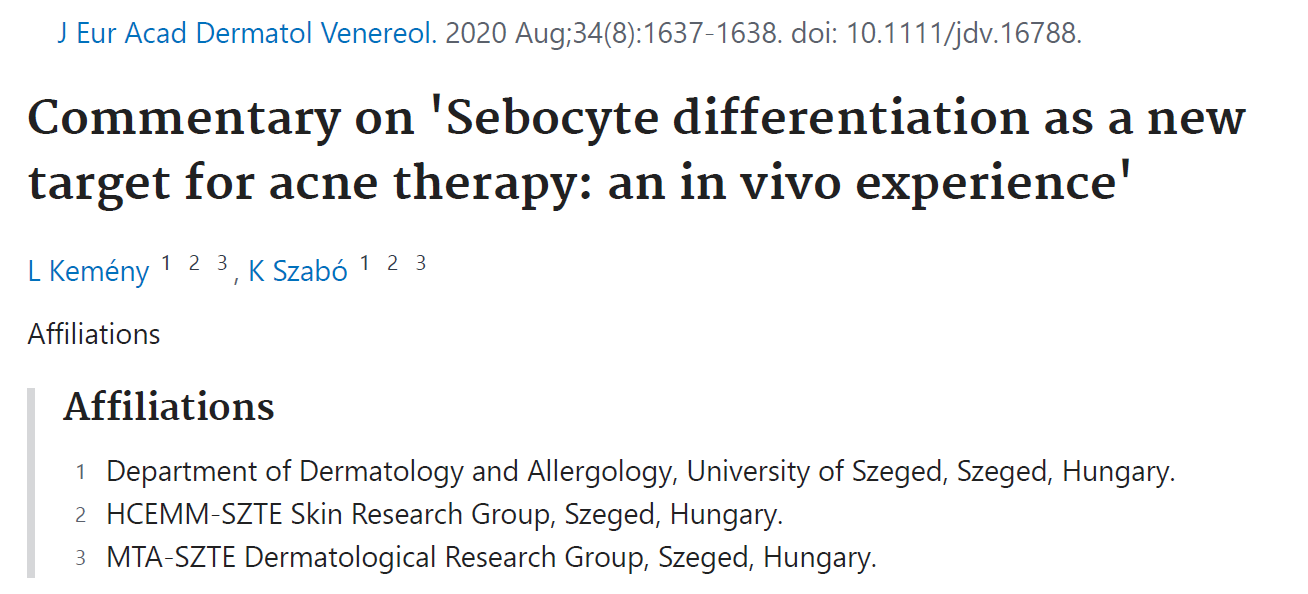Nogra Pharma is available to give comprehensive Project presentations, provide additional Project specific details or confidential information and discuss potential collaborations or out-licensing opportunities with interested companies.

Alterations in sebocyte functions, referred to as dysseborrhea, caused by changes in sebum composition and the rate of secretion are characteristic features of many of the most common and well-known skin diseases, including acne, seborrhoeic dermatitis, atopic dermatitis, rosacea and psoriasis. According to our current understanding, sebum plays important roles in the formation of the cutaneous barrier, and a growing body of evidence suggests that changes in sebaceous lipogenesis are disease markers and important determinants of the pathogenic processes. Through their special properties, sebaceous glands and sebocytes create a specific and characteristic innate and adaptive immune barrier and play a prominent role in the development of the region-specific distribution observed in the diseases mentioned above. As a result, studies that are carefully investigating sebum composition changes in these different cutaneous conditions and the underlying pathogenic cellular and molecular events may enhance our understanding of the etiopathogenesis of a particular disease and provide novel target molecules and treatment modalities.
Enhanced sebum secretions in the affected skin of acne patients have been observed for decades, and recent studies highlight marked composition differences compared to age-matched control individuals. These investigations confirmed that the human sebum has a special species-specific composition. Consequently, it is not possible to find suitable animal models to study these functions, and researchers still heavily rely on the use of in vitro cell cultures to elucidate disease pathogenesis. However, results that are obtained using especially immortalized cells are sometimes difficult to translate to an entire organism. These cells grow under strictly controlled environmental conditions, and their specific characteristics (e.g. differentiation state), which can also affect their responsiveness, may not truly represent the features of the in vivo counterparts. As a result, it is important to carefully monitor the properties and functions of the in vitro model systems used.
A good example of such a careful study is in the current JEADV issue. Ottaviani et al. investigated the consequences of insulin treatment in human in vitro cultured immortalized sebocytes. In their studies, the authors performed insulin treatment in SZ95 cells exhibiting various differentiation levels, which they achieved simply by discarding serum from the culturing media or performing the assays in cultures representing different confluency levels. They showed that low confluence and serum-free cultures include cells representing a less differentiated state. These sebocytes exhibited a higher sensitivity to insulin, which is one of the important regulators of sebaceous gland activity. The treated cells responded with increased lipid production and qualitative and quantitative changes in the composition of the secreted sebum. These changes were accompanied by increased expression of genes playing a role in lipid homoeostasis (e.g. SREBP1, FAS, FSDS2), in a manner similar to that observed with acne patients. Induction of SZ95 differentiation with a chemical (NAC-GED0507) specifically targeting PPARγ significantly lowered the measured effects of insulin challenge on lipogenesis.
As a proof of principle, the presented in vitro data nicely translated to the patient level, and a gel containing 1% NAC-GED0507 significantly reduced acne manifestations in an open-label phase 1 clinical trial. This was accompanied by a marked induction of sebocyte differentiation, together with a consequent alteration of sebum composition and inflammation reduction.
These results clearly show that, apart from the well-described role of sebocytes in the induction if innate immune and inflammatory events, their differentiation is an important factor during acne pathogenesis. Carefully planned and evaluated in vitro cell culture studies have a translational potential, resulting in clinically relevant data even in the absence of more complex model systems.
